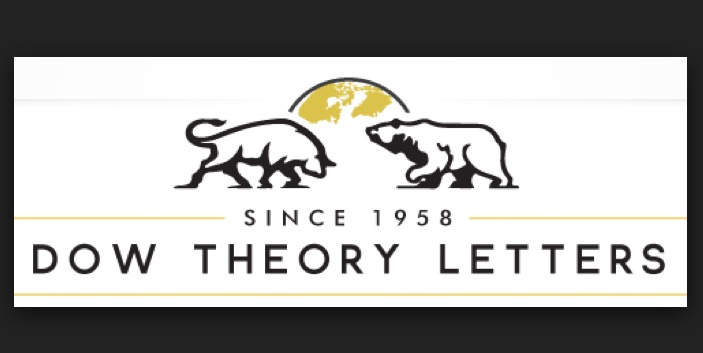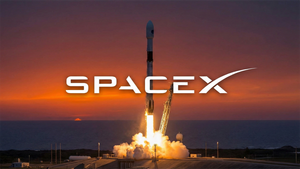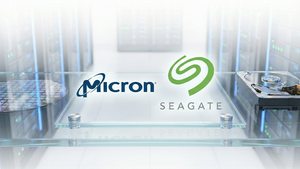
As November 2025 draws to a close, a palpable sense of "Market Gratitude" pervades global financial circles. This optimism isn't merely fleeting; it's deeply rooted in a powerful triumvirate of positive forces: a broad-based market rally, the undeniable durability of the global economy, and a relentless innovation cycle, primarily spearheaded by Artificial Intelligence (AI). These interwoven factors are collectively fostering robust investor confidence, propelling major indices to new highs, and reshaping the financial landscape with profound implications for public companies and the broader public.
The immediate implication is a sustained period of growth and opportunity, albeit with an undercurrent of caution regarding valuations and geopolitical stability. Investors are witnessing a market that is not only performing well but is also underpinned by fundamental economic strength and transformative technological advancements, setting the stage for continued dynamism into the new year.
The Resurgence: A Broad-Based Rally Takes Hold
The current market enthusiasm is largely fueled by a significant broad-based rally that has swept across major global indices throughout 2025, culminating in strong performance as of November. This upturn is far from concentrated, demonstrating widespread investor confidence. Major U.S. indices like the Dow Jones Industrial Average (DJIA), S&P 500 (SPX), and Nasdaq Composite (IXIC) have all posted substantial gains, with the Dow notably achieving its longest winning streak since 2018 by October's end. This momentum has extended beyond large-cap technology stocks, with mid-cap and small-cap indices also participating, and diverse sectors such as banking, metal, financial services, energy, and information technology showing strong advancement.
The timeline leading to this rally has been marked by several key developments. Following a robust October, November commenced with a bullish outlook, buoyed by the prospect of easing monetary policies. The U.S. Federal Reserve (Fed) initiated a 25-basis-point rate cut in October, lowering the benchmark short-term interest rate target to 3.75%–4%, the lowest in three years. This move, coupled with growing expectations of further rate cuts in December and throughout 2025, has significantly de-risked the market environment and encouraged investment. Technology and AI-related stocks, including NVIDIA (NASDAQ: NVDA), Advanced Micro Devices (NASDAQ: AMD), Palantir Technologies (NYSE: PLTR), and Micron Technology (NASDAQ: MU), have been particularly influential, driving strong gains following positive earnings reports and continued AI optimism. For instance, Amazon (NASDAQ: AMZN) saw a significant surge in early November after reporting better-than-expected third-quarter results.
Global cues have also played a crucial role. Easing geopolitical tensions in some regions, a decline in crude oil prices, and strong domestic macroeconomic indicators in economies like India have contributed to the global rally. By late November, the Indian stock market experienced a sharp recovery, with the Sensex surging over 1.25% and the Nifty gaining similarly, driven by broad-based buying. Similarly, the UK's FTSE 100 (INDEXFTSE: UKX) reacted positively to the Autumn Budget, and Canada's TSX Composite (INDEX: TSX) rose to a record high, led by consumer discretionary, industrials, and financial stocks. Key stakeholders, including central banks like the U.S. Federal Reserve, and major technology companies, have been instrumental in shaping this positive environment. Initial market reactions have been largely optimistic, reflected in rising asset prices and increased investor wealth, although some analysts caution about stretched valuations in certain sectors.
Economic Resilience: The Durable Economy's Foundation
Underpinning the market's rally is an economy demonstrating remarkable durability and resilience, a critical factor contributing to investor gratitude. As of November 2025, the global economy appears to be navigating a path of moderate growth, successfully mitigating earlier fears of a severe downturn. The U.S. GDP growth for 2025 is projected at a sustainable 1.9%, indicating continued expansion without overheating. This steady growth trajectory is a testament to the economy's ability to absorb shocks and maintain momentum, distinguishing it from more volatile periods.
A cornerstone of this durable economy is the resilient labor market. Despite a slight anticipated uptick in 2026, the unemployment rate remains at approximately 4.2%, signaling strong employment levels. This robust job market, coupled with rising real wages, continues to support consumer spending, which is a significant driver of economic activity. While consumer confidence has shown some recent dips due to concerns over inflation and geopolitical factors, overall spending remains firm, preventing any significant contraction in demand. Business investment, particularly in areas like artificial intelligence, is also holding steady, reflecting corporate confidence in future economic prospects.
The easing of inflationary pressures has been another crucial development. Core Personal Consumption Expenditures (PCE) inflation is projected at 2.5%, and global inflation is expected to decline to 3.4% in 2025. This disinflationary trend, coupled with the Federal Reserve's cautious approach to interest rates, suggests a more accommodative monetary policy environment on the horizon. The Fed's October rate cut and the ongoing debate about further reductions underscore a commitment to fostering stable growth. Durable goods orders have held steady, further indicating cautious but consistent optimism within the manufacturing sector. This combination of moderate growth, a strong labor market, easing inflation, and supportive monetary policy expectations paints a picture of an economy built on solid foundations, capable of weathering future challenges.
The AI Revolution: Fueling the Innovation Cycle
The third, and perhaps most transformative, pillar of market gratitude is the relentless and accelerating innovation cycle, predominantly driven by Artificial Intelligence (AI). November 2025 finds the AI landscape in a rapid transition from experimental stages to widespread integration, profoundly impacting productivity and opening vast new avenues for growth across industries. The AI boom is not just a market driver; it's a fundamental reshaping of how businesses operate and how value is created.
The timeline of AI advancements leading to this point has been breathtaking. From the late 2022 emergence of generative AI chatbots like OpenAI's ChatGPT, to the continuous evolution of multimodal models (e.g., Google's Gemini 2.0 and Anthropic's Claude Haiku 4.5) capable of understanding and generating diverse forms of media, the pace of innovation has been exponential. Key developments in 2024 included Microsoft's (NASDAQ: MSFT) launch of Security Copilot and rebranding of Edge as an "AI Browser," Apple's (NASDAQ: AAPL) introduction of "Apple Intelligence," and significant breakthroughs in vaccine research by Meta AI (NASDAQ: META). By early 2025, foundation models like OpenAI's GPT-5.1 and Elon Musk's xAI's Grok-3 further enhanced reasoning and natural language capabilities.
As of November 2025, the focus has firmly shifted to practical, useful applications that deliver tangible business benefits. AI infrastructure dominance is intensifying, with tech giants making billion-dollar partnerships and massive data center investments. NVIDIA (NASDAQ: NVDA) remains a critical enabler, providing the high-performance GPUs essential for AI compute. New AI tools like Cursor AI 5.1 (for enhanced coding), v0.dev by Vercel (for AI-powered web app design), and Devin by Cognition Labs (an AI software engineer) are transforming development workflows. AI's influence permeates healthcare (drug discovery, diagnostics), finance (fraud detection, risk assessment), software development (code generation, testing), and manufacturing (predictive maintenance, supply chain optimization). Global corporate investment in AI has reached unprecedented levels, with over 50% of global venture capital funding in 2025 directed towards AI-related companies, totaling $118 billion as of August. This massive investment underscores the market's conviction in AI's long-term transformative power, driving significant productivity gains, although organizations are still working to fully scale these individual-level benefits across entire enterprises.
Winners and Losers: Corporate Impact of the Current Climate
The current market environment, characterized by a broad-based rally, a durable economy, and a surging innovation cycle driven by AI, is creating distinct winners and losers among public companies. Companies at the forefront of AI development and adoption are undoubtedly the primary beneficiaries, experiencing robust demand and significant investment.
NVIDIA (NASDAQ: NVDA), as the leading provider of GPUs and AI computing platforms, continues to be a massive winner, fueling the entire AI ecosystem. Other tech giants deeply invested in AI, such as Microsoft (NASDAQ: MSFT) through its Azure cloud services and Copilot integrations, and Alphabet (NASDAQ: GOOGL, GOOG) with Google Cloud and the Gemini ecosystem, are seeing substantial growth. Companies like Amazon (NASDAQ: AMZN) are leveraging AI to enhance their cloud offerings (AWS) and optimize logistics, while Meta Platforms (NASDAQ: META) is investing heavily in AI for its social platforms and metaverse ambitions. AI-focused startups that have secured significant funding in 2025, such as Sortera Technologies (AI-driven recycled aluminum), Overstory (AI-based wildfire risk models), and Glean (enterprise AI agents), are also poised for substantial growth and market disruption. Furthermore, companies in sectors like cybersecurity, healthcare, and financial services that are rapidly integrating AI for efficiency, risk management, and personalized customer experiences are gaining a competitive edge.
On the other hand, companies that are slow to adapt to the AI revolution risk falling behind. Traditional businesses with outdated infrastructure or those unwilling to invest in AI integration may face declining productivity and market share. Industries heavily reliant on routine, automatable tasks could see job displacement and pressure on profit margins if they fail to reskill their workforce and embrace AI tools. Companies with stretched valuations, particularly those in the tech sector that have seen explosive growth without corresponding fundamental improvements, could face corrections if investor sentiment shifts or if the promised AI productivity gains do not materialize at scale. Additionally, companies heavily dependent on specific supply chains or those with significant debt burdens might find themselves more vulnerable if economic growth moderates or if interest rates remain elevated for longer than anticipated, despite the current easing trend. The broad-based rally, while generally positive, also means that companies without strong underlying fundamentals or clear growth strategies may struggle to keep pace with their more innovative and agile counterparts.
Broader Implications: Reshaping the Financial Landscape
The confluence of a broad-based rally, a durable economy, and a transformative innovation cycle, particularly in AI, carries wider implications that are profoundly reshaping the financial landscape. This event fits into a broader industry trend of technology-driven economic evolution, where digital transformation and AI are no longer optional but existential for businesses. It accelerates the shift towards a knowledge-based economy, emphasizing data, computing power, and intellectual property as key drivers of value.
The potential ripple effects on competitors and partners are significant. Companies that embrace AI aggressively are creating a widening competitive moat, forcing rivals to either invest heavily in similar technologies or risk obsolescence. Partnerships between AI developers (like OpenAI) and cloud providers (like Microsoft) are becoming more strategic, consolidating power among a few tech giants while also fostering a vibrant ecosystem of specialized AI startups. This dynamic could lead to increased M&A activity as larger players seek to acquire innovative technologies and talent. Regulatory and policy implications are also emerging, with governments like the EU enacting comprehensive AI laws (EU AI Act) to balance innovation with ethical considerations and risk management. This regulatory environment will shape how AI is developed and deployed, potentially creating compliance burdens for companies but also fostering trust and responsible innovation.
Historically, periods of rapid technological advancement combined with economic stability have often led to sustained market growth, albeit sometimes punctuated by speculative bubbles. The dot-com boom of the late 1990s offers a cautionary tale of overzealous investment in nascent technologies. However, the current AI cycle differs in its immediate and tangible impact on productivity across diverse sectors, suggesting a more fundamental and sustainable shift. The current durable economy, with easing inflation and a resilient labor market, provides a more stable foundation than some previous periods of rapid technological change. The challenge lies in distinguishing between genuine innovation and speculative hype, and in ensuring that the benefits of this innovation are broadly distributed, rather than exacerbating existing inequalities.
The Path Ahead: Navigating Future Market Dynamics
Looking ahead, the market's current trajectory, fueled by a broad-based rally, a durable economy, and the relentless AI innovation cycle, suggests a complex but potentially rewarding path. In the short term, the market is likely to remain buoyant, supported by expectations of continued monetary policy easing from the Federal Reserve and strong corporate earnings driven by AI adoption. Investors should anticipate continued volatility, however, as geopolitical developments and inflation data could still introduce uncertainty. The focus will be on the practical implementation of AI, moving beyond grand concepts to tangible, measurable business benefits, which will dictate which companies continue to thrive.
In the long term, the innovation cycle, particularly in AI, is poised to unlock significant productivity gains and create entirely new industries and job roles. Companies that can strategically pivot and adapt to this AI-driven transformation will be best positioned for sustained growth. This will require continuous investment in AI research and development, reskilling of the workforce, and a willingness to rethink traditional business models. Market opportunities will emerge in areas like specialized AI applications, AI infrastructure, ethical AI development, and industries that leverage AI to solve complex societal challenges, such as climate change and healthcare. Conversely, challenges will include managing the ethical implications of AI, addressing job displacement concerns, and navigating an evolving regulatory landscape. Potential scenarios range from a continued "soft landing" with sustained growth to periods of increased market turbulence if inflation resurfaces or if geopolitical tensions escalate. The key will be agility and a forward-looking approach to capitalize on the opportunities while mitigating the risks.
Concluding Thoughts: A Period of Optimism and Opportunity
In summary, the market's prevailing "gratitude" in November 2025 is a powerful narrative woven from three interconnected threads: a broad-based rally signaling widespread confidence, a durable economy providing a stable foundation, and a transformative AI-driven innovation cycle propelling future growth. These factors have created an environment conducive to sustained positive sentiment and offer significant opportunities for investors. The market is moving forward with a sense of cautious optimism, recognizing the immense potential of AI to reshape industries and boost productivity, while also being mindful of lingering economic and geopolitical uncertainties.
Key takeaways include the importance of central bank policies in de-risking the market, the resilience of consumer spending and labor markets, and the profound, accelerating impact of AI across all sectors. As investors look to the coming months, they should watch for further signals on interest rate trajectories, the continued scaling of AI applications from pilot to production, and any shifts in global economic stability. The current period represents a unique convergence of technological advancement and economic resilience, offering a compelling case for continued market dynamism and long-term value creation for those who are strategic and adaptive.
This content is intended for informational purposes only and is not financial advice





